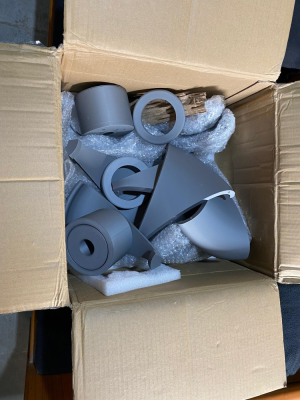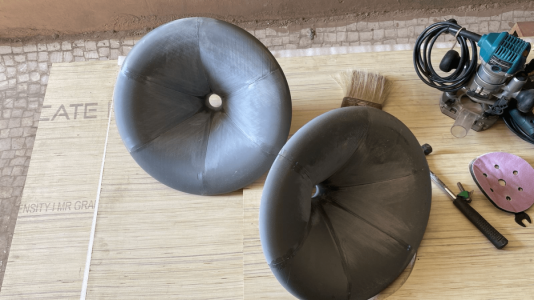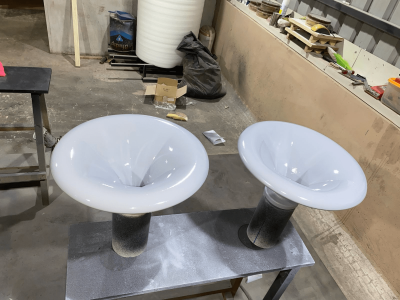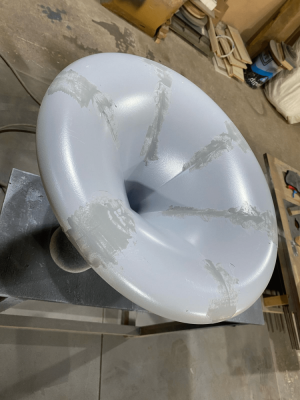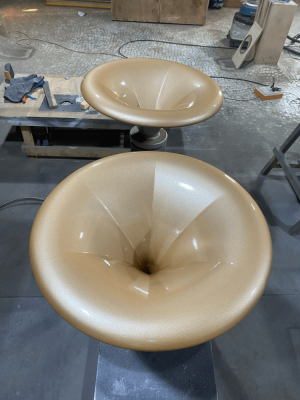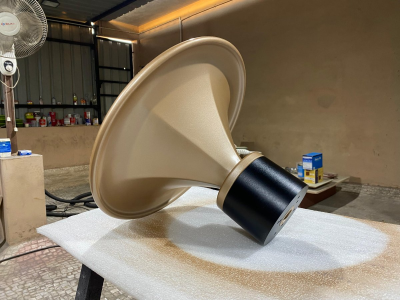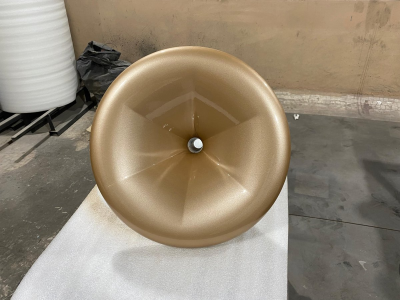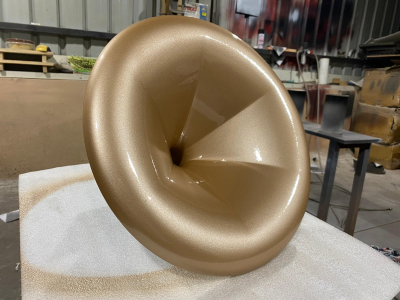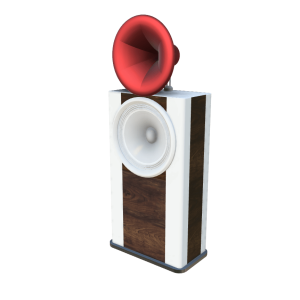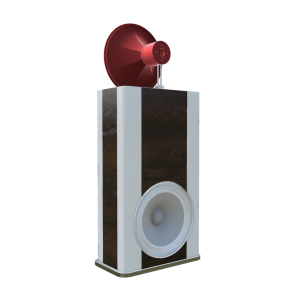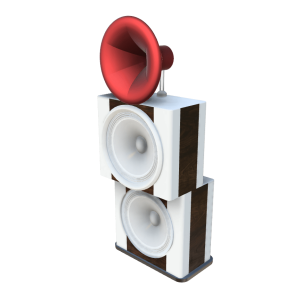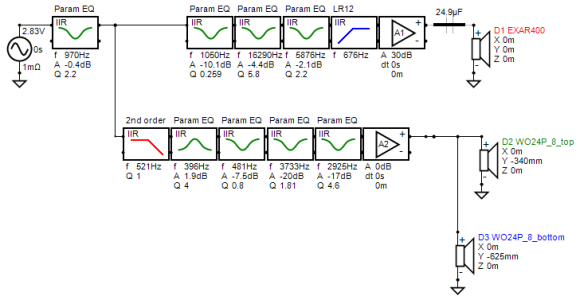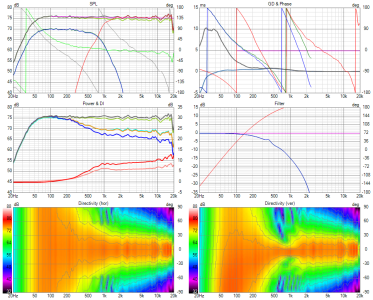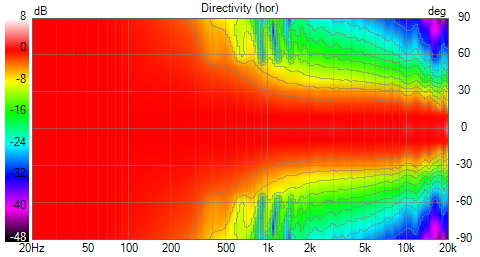Thanks
@Yelamanchili manohar &
@Decadent_Spectre and others for all the comments and suggestions.

First of all, I live in rented accommodation, and the speakers are placed in the living room, which is as good as an acoustical nightmare.
Instead of the left-side wall, there is a full glass panel (in my latest recording the sound of glass shaking can be heard during the initial bass drop..

), the size of a wall. On the right side, the wall is about 4m+ away, So there is no scope for room treatment here, except something that can be placed in the wall behind the sofa where I sit.
I don't like this at all, and it makes my speakers sound worse compared to their true capabilities. However, I have to make do with it for now.

Secondly, regarding the validity of the frequency response for the recording position, here is a comparison of frequency responses (trying for SPL match around the 1kHz region) at at two different locations about 2 feet apart, while sitting on the couch (but moving more off-axis to the horn)
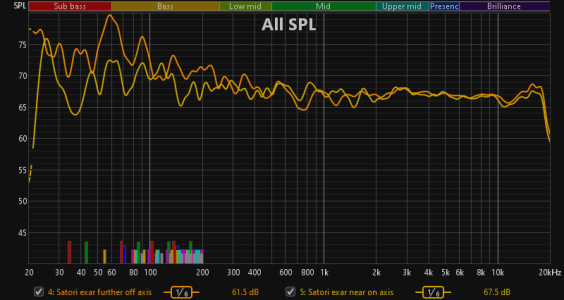
The recording mic was positioned somwhere in between the above mentioned 2 locations. Therefore I estimate the frequency response at the recording loction to be something in between the above two responses.
This system is not yet complete. The 15PR400s and the SB NERO 15SW800s haven't got their final boxes made yet. This current system was cobbled up so that I could experience how these horns sound like..
The objective of the final system is to have directivity control (at least to some extent) starting right from100Hz (cardioidish radiation pattern) achieved using DSP EQ dual woofer system, meets the horn around 600 to 700 Hz after which the directivity control aspect is taken over by the horns. The horns have a relatively narrow beamwidth (about 70 degrees max) compared to the current trend of having speakers with 100+ degrees of beamwidth. What this does is it controls the direct-to-reflected sound ratio in the room to some extent. Here are some comparisons using measurements of the horn and woofer systems
Pic showing horn beamwidth across the spectrum
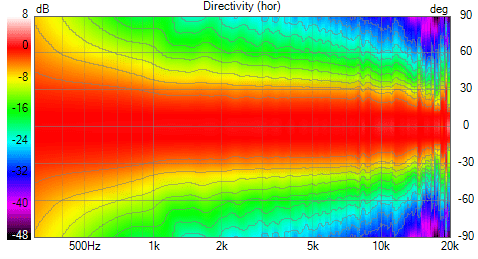 Pic showing the beamwidth that can be achieved using cardioidish radiating 15inch dual woofer system
Pic showing the beamwidth that can be achieved using cardioidish radiating 15inch dual woofer system
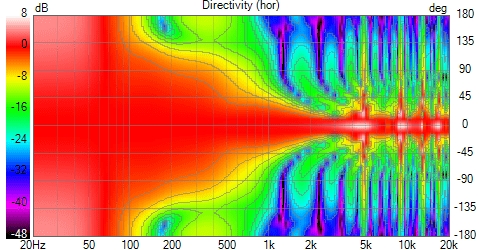
Now, compare the above plot to the beamwidth of my current Satori dual woofer system below
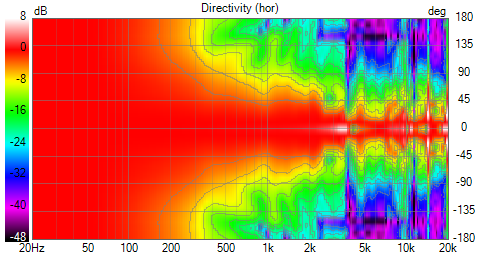
Comparing the above two graphs, we see that in the top plot (for dual 15-inch woofers), significant attenuation of the radiation happens beyond 120 degrees due to nulls forming in the 100 to 350Hz region. Notice that the attenuation is of the order of about 15dB+ for this radiation towards the back. This is the trick to be used for getting the front wall interference significantly down

compared to my current system
How does the directivity blend happen between the dual 15inch woofer system and the EXAR 400? Here is a pic showing that

Notice the wide overlap between the green curve and the red curve.. That gives a lot of flexibility with crossover..
They were really made for each other..

Adding more room treatment to the region where the horn is doing its duty might even be detrimental to soundstage-related aspects. Here is a spectral decay plot from the MLP. Above 4kHz or so, we already have energy decayed enough due to the high directivity of the horn but below that, some room treatment should help (if it was feasible) with more decay and reducing peak energy spread due to reflections. So a delicate balancing has to be done with this system + room treatment to not loose too much treble extension while making right/get rid of some of the junk down below

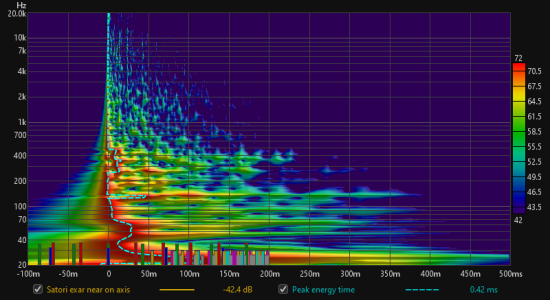
All these workarounds using directivity tricks might help improve system performance but probably never achieve 100% of what a dedicated treated room can do.. All that room "noise" reduction including all the flutter echo and the reflections. Taming down the bass to some extent etc etc..
Alas, room treatment is out of the picture for now. Someday, when I have my own home, I shall have a dedicated listening room.. Till then I have to make do with all kind of tricks and band aid tweaks...
All that said, how does the system sound in this bad room at the moment. They are amazing.. Best system I have had so far.. I love it to bits..

(Biological signal processing done by our ear-brain system does a lot of work at that..

)



